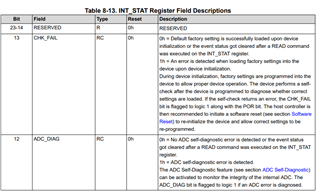Hi,
I'm the hardware engineer working on Part 5 of ISO-26262. I'm doing the analysis of the effects of random hardware failures, and I need some clarification of some failure modes included in the safety documentation of the TIC10024QDCP*Q1.
The failure modes are:
- Monitoring System and Protection Error
- Logic Blocks and Clock Failure
- Communication Error
What are the exact effects of each failure mode?
Additionally, in which failure mode is included a failure of the wetting current?
Best regards and thanks in advance,
Alexis




